This Herb Butter Christmas Turkey is a cherished holiday tradition in our home. While slowly roasting it basks in the warmth of oranges, lemons, turnips, and carrots, infusing the meat with a delightful aroma and taste. The result is a delectable dish, rich in flavors, making every holiday gathering an event worth remembering.
If you’re a fan of our delicious Herb Butter Christmas Turkey, you’re in for a treat with our Roasted Turkey Thighs, Christmas Pot Roast, and Roasted Leg of Lamb!
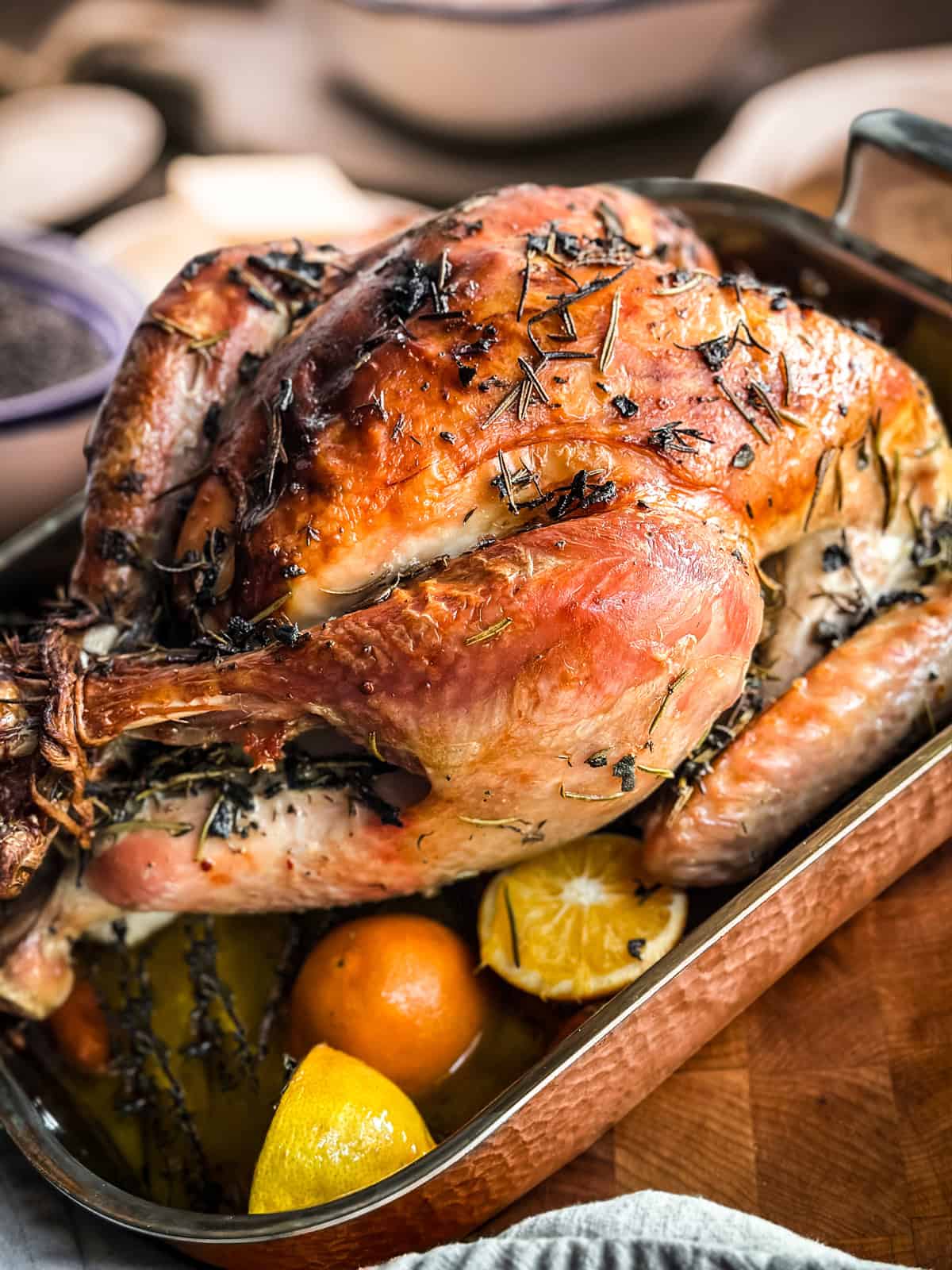
Why this recipe sings
Here is what you need
- A turkey—Preferably, organic free range from a farm you trust. Raised in green fields and humanely treated. Or a good quality frozen turkey.
- Coarse sea salt— you will need at least half a cup for the dry brine.
- Fresh herbs—lots of them. Rosemary, thyme, sage and oregano are my favorites.
- Butter—lots of good quality butter.
- Root vegetables— like carrots, onions, garlic, turnips, celeriac.
You will also need a meat injector syringe to infuse the turkey meat with butter while cooking.
How to make herb butter turkey
Brine
There are two effective methods for preparing your Christmas turkey: wet or dry brining.
Dry brining: This is my preferred process and the one we are using for this recipe. It involves massaging a mixture of salt (and herbs if you like) onto the turkey and allowing it to rest in the refrigerator for a couple of days at best. This method enhances the bird’s flavor and moisture without for additional liquid.
Wet brining: It is a bit more involved. It entails immersing the turkey in a flavorful salt-water solution, where you can also add various herbs, spices, and aromatics. To elevate the taste even further, some people include ingredients like sugar, molasses or even beer in the brine. This method requires soaking the turkey overnight or for a couple of days, ensuring it remains juicy and richly seasoned throughout.
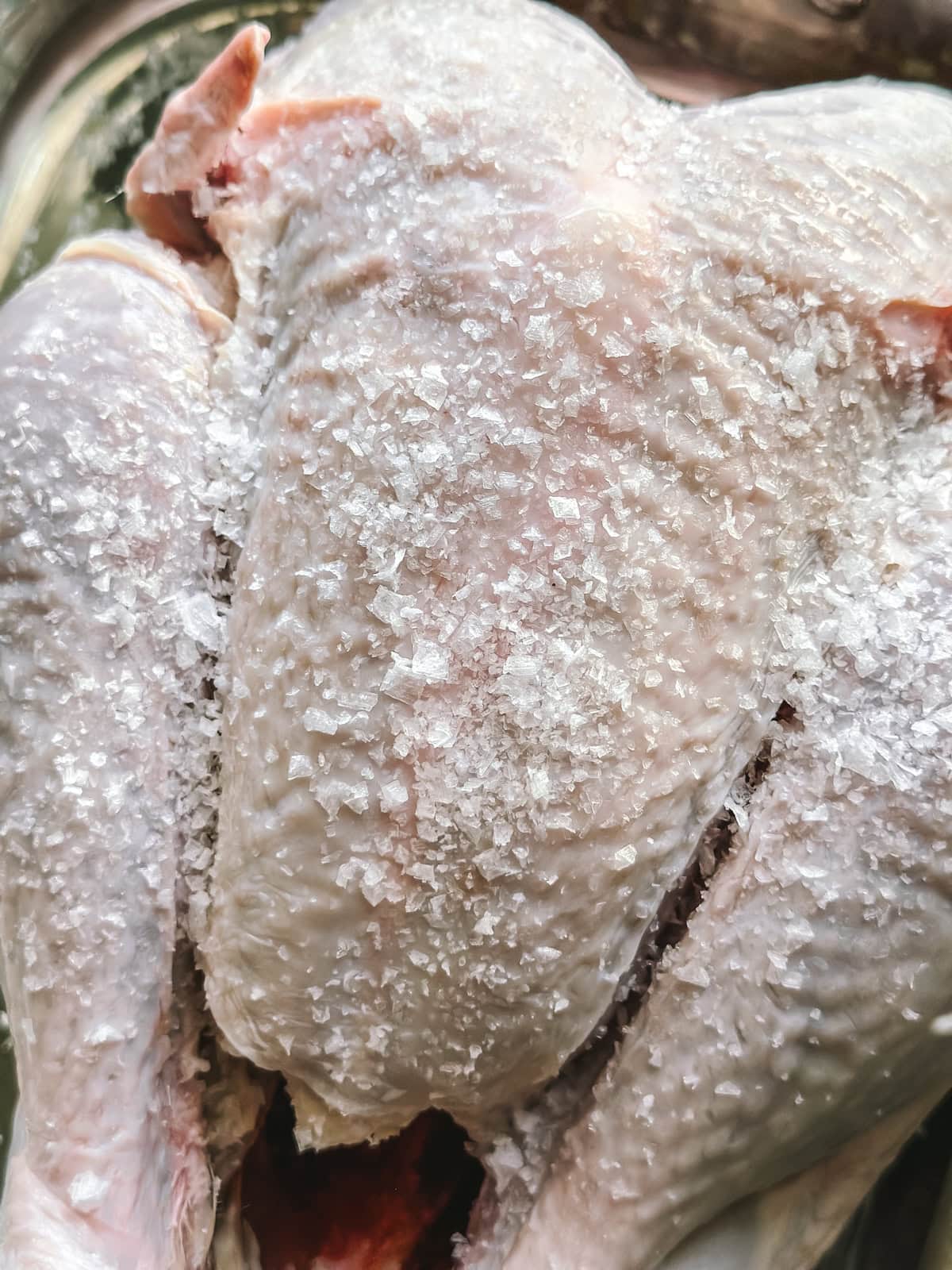
- For a dry brine, start at least one day (and up to three days) before you intend to roast your turkey. Remove the giblets from the cavity, then pat dry well all over with paper towels both inside and outside.
- Use coarse sea salt or kosher salt for a brine—never table salt. The size of the salt crystals is perfect for dry brining. You will need about one tablespoon of coarse sea salt or Diamond Crystal kosher salt per pound of turkey.
- Place the salted turkey on a rack inside a rimmed baking sheet to catch drippings or in your cooking pan. Refrigerate it uncovered for at least 1 hour per pound (14 hours for a 14-pound turkey). With dry brining, you can go up to three days of resting.
- If having a raw, uncovered turkey in your fridge feels uncomfortable, loosely cover it with plastic wrap or a brining bag. For the crispiest skin, uncover the turkey for at least the last six hours before cooking.
- There’s no need to rinse the turkey before roasting; there shouldn’t be any salt residue left.
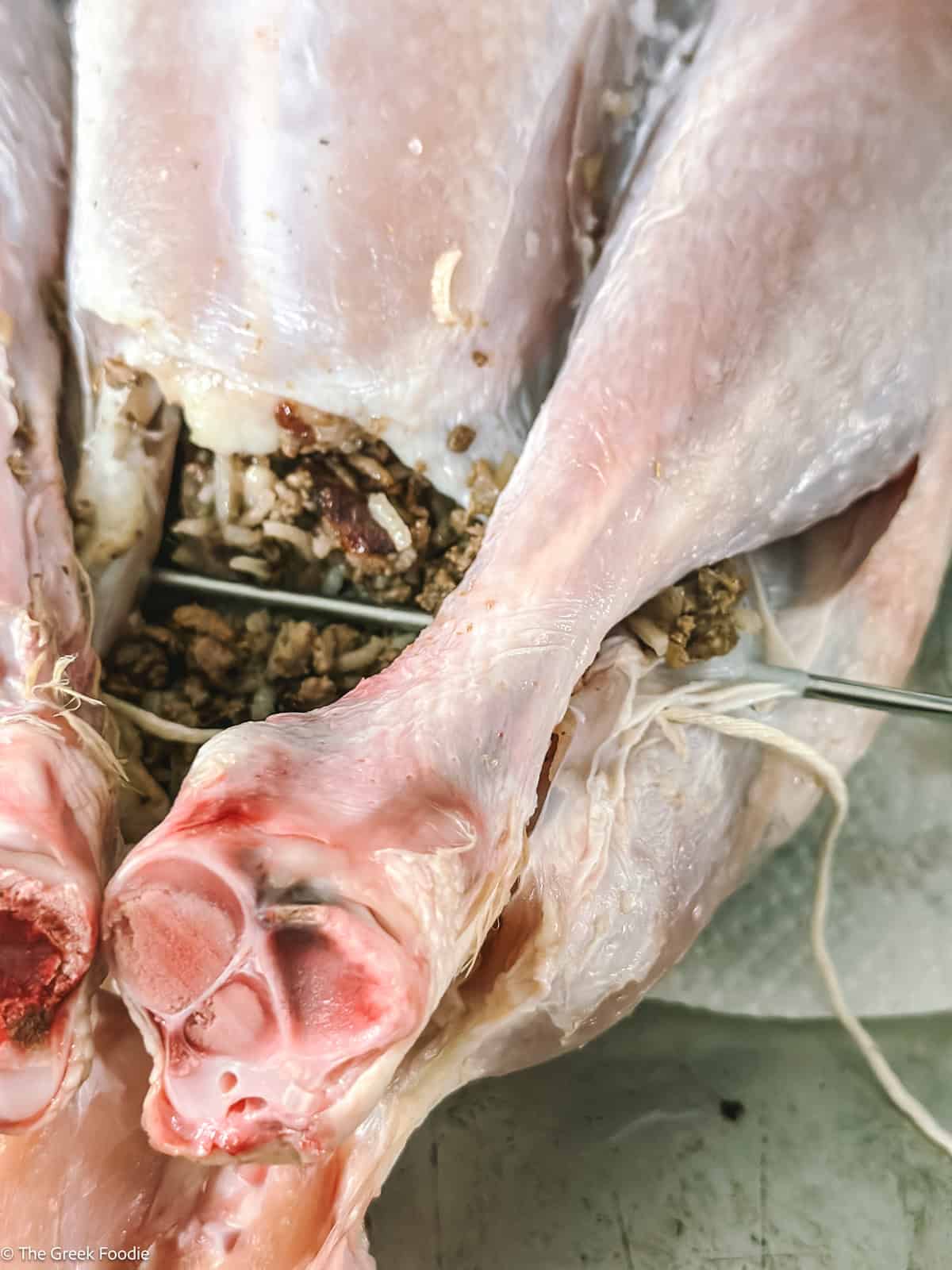
- When you are ready to roast, don’t wash the turkey; gently remove any extra salt from the skin and proceed with the roasting.
- Make the Greek stuffing.
- Turn the turkey upside down and gently fill the neck cavity with stuffing. Once filled, carefully tuck the neck skin over the filling and secure it neatly against the underside of the turkey. You can sew it closed or use a long toothpick or skewer.
- Close the cavity. You can use a thread and a long thick needle or a long skewer with plenty of kitchen twine tied tightly on one end. Pierce the skin on the right side of this flap with the sharp point of the needle. Slide the needle and thread the loose skin from one side of the cavity to the other as tight as possible. Pass the needle through a couple of times if needed. Use the extra twine to tie the legs crossed tight over the cavity.
- Fold the wings under the turkey or cut them with poultry scissors. If you leave the wings as they are, wrap them with aluminum foil to avoid burning.
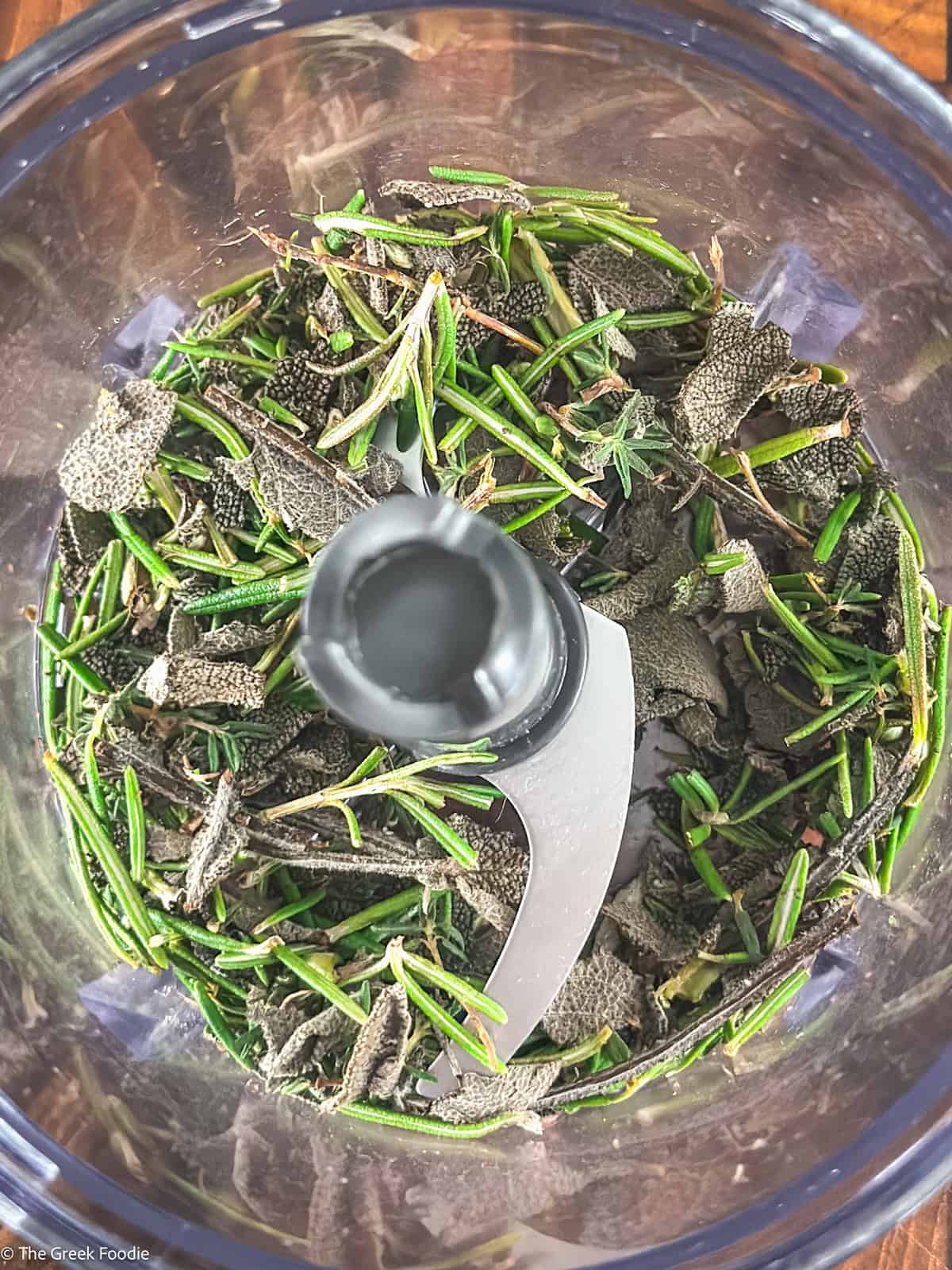
- Roughly chop the herbs with a sharp knife or in a food processor.
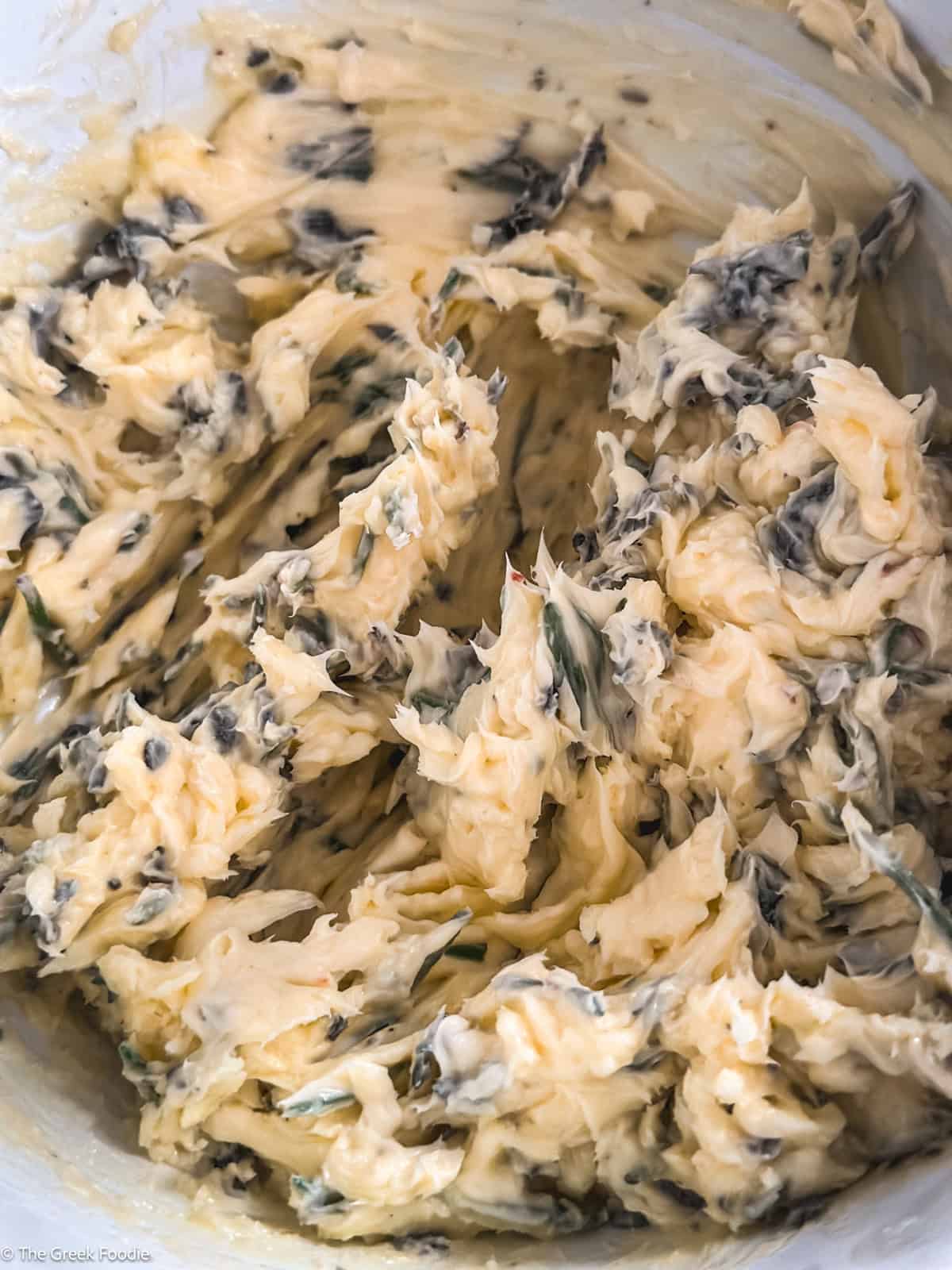
- Mix the chopped herbs with the softened butter.
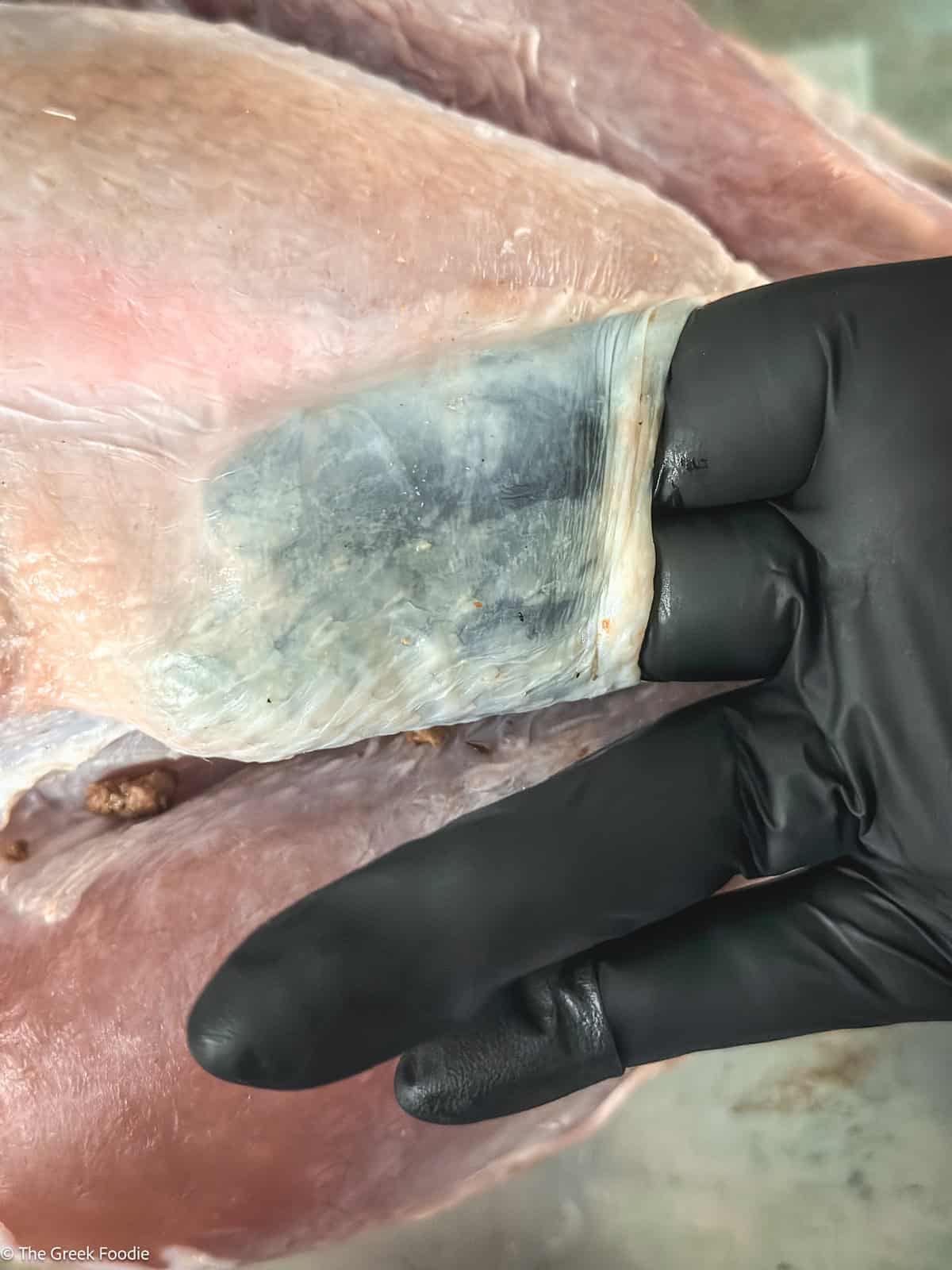
- Gently lift the breast skin from the flesh as much as possible without tearing it.
- Insert some butter under the skin wherever you can. It’s okay if you don’t go too far in.
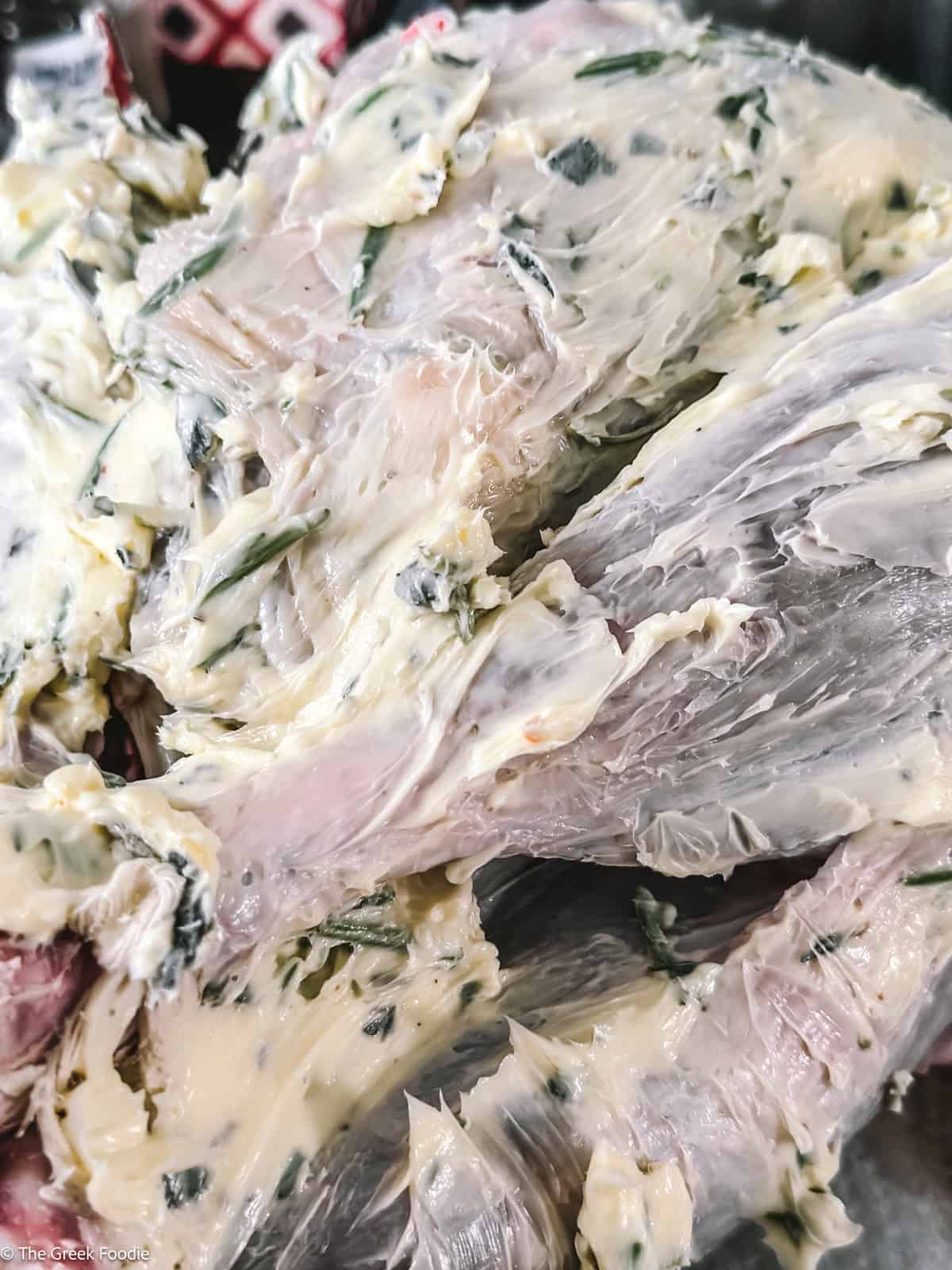
- Rub all the herb butter all over the turkey. It will look too much but don’t fret, continue with the process.
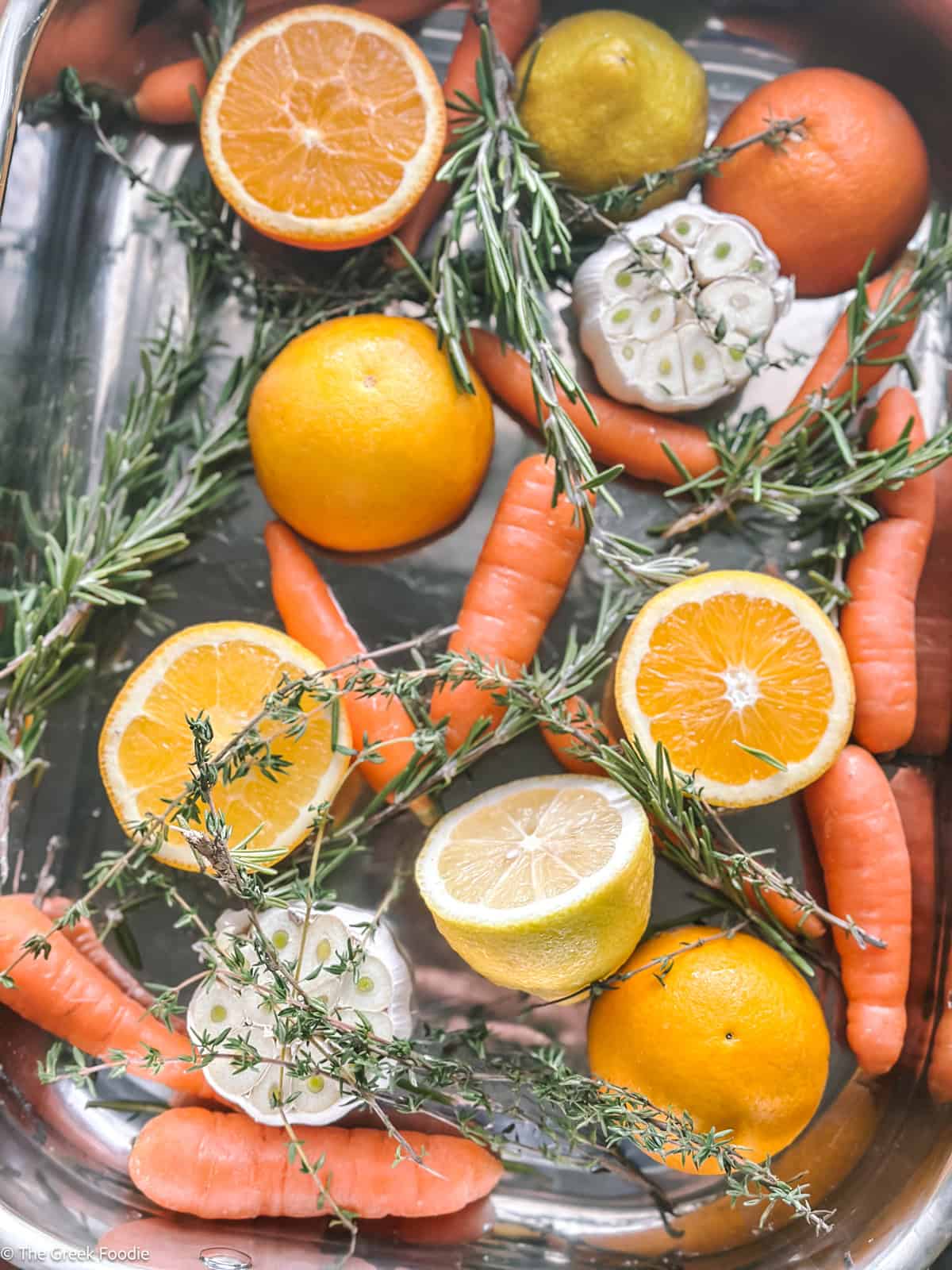
- Arrange orange and lemon halves, herb sprigs, carrots and a couple of heads of garlic(cut the top off).
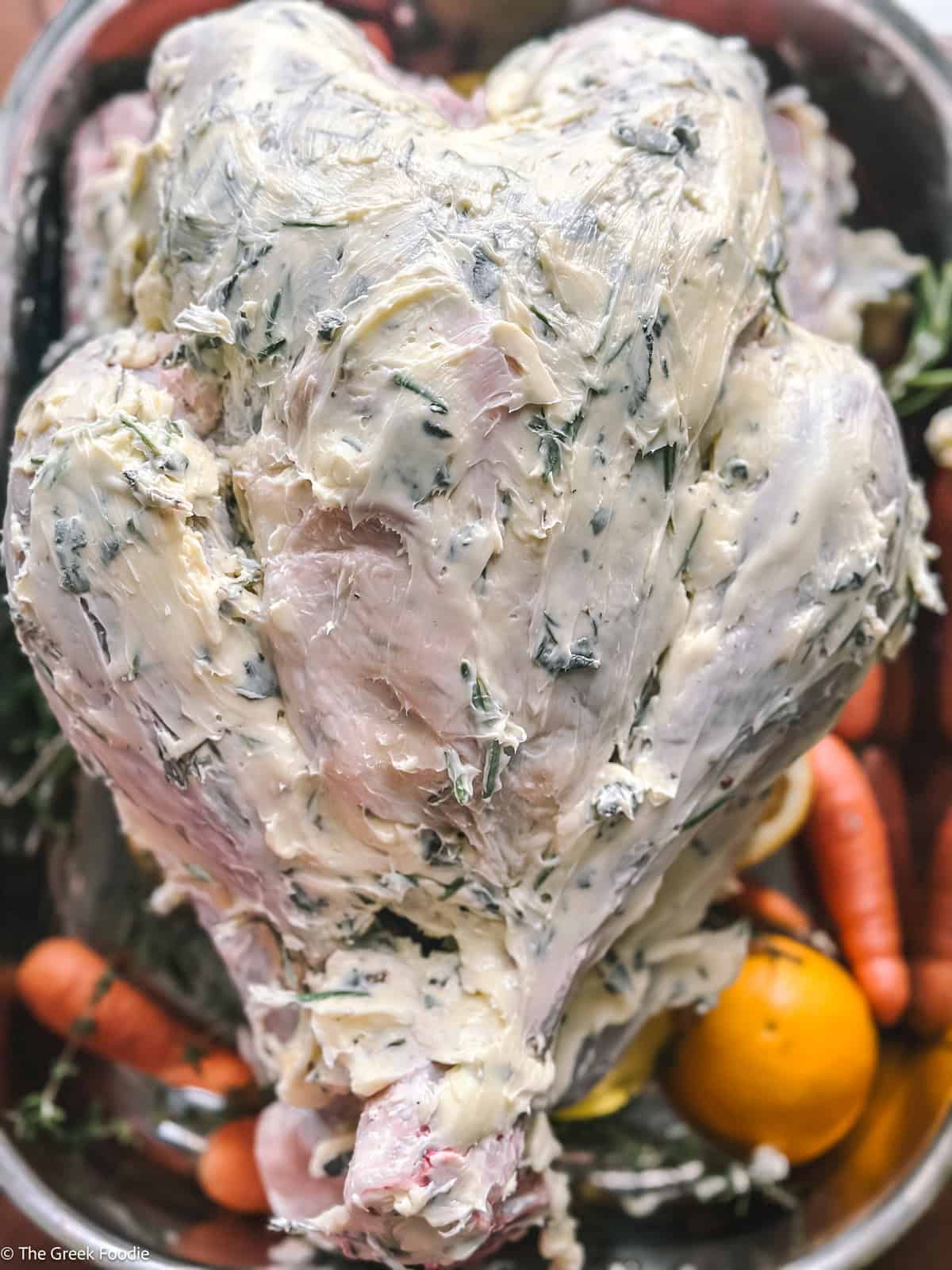
- Lay the buttered turkey on top of the fruits and herbs. Cover with aluminum foil. Roast turkey at 200°C / 400°F for an hour.
- Lower the oven temperature to 180°C / 355°F. Uncover and continue roasting.
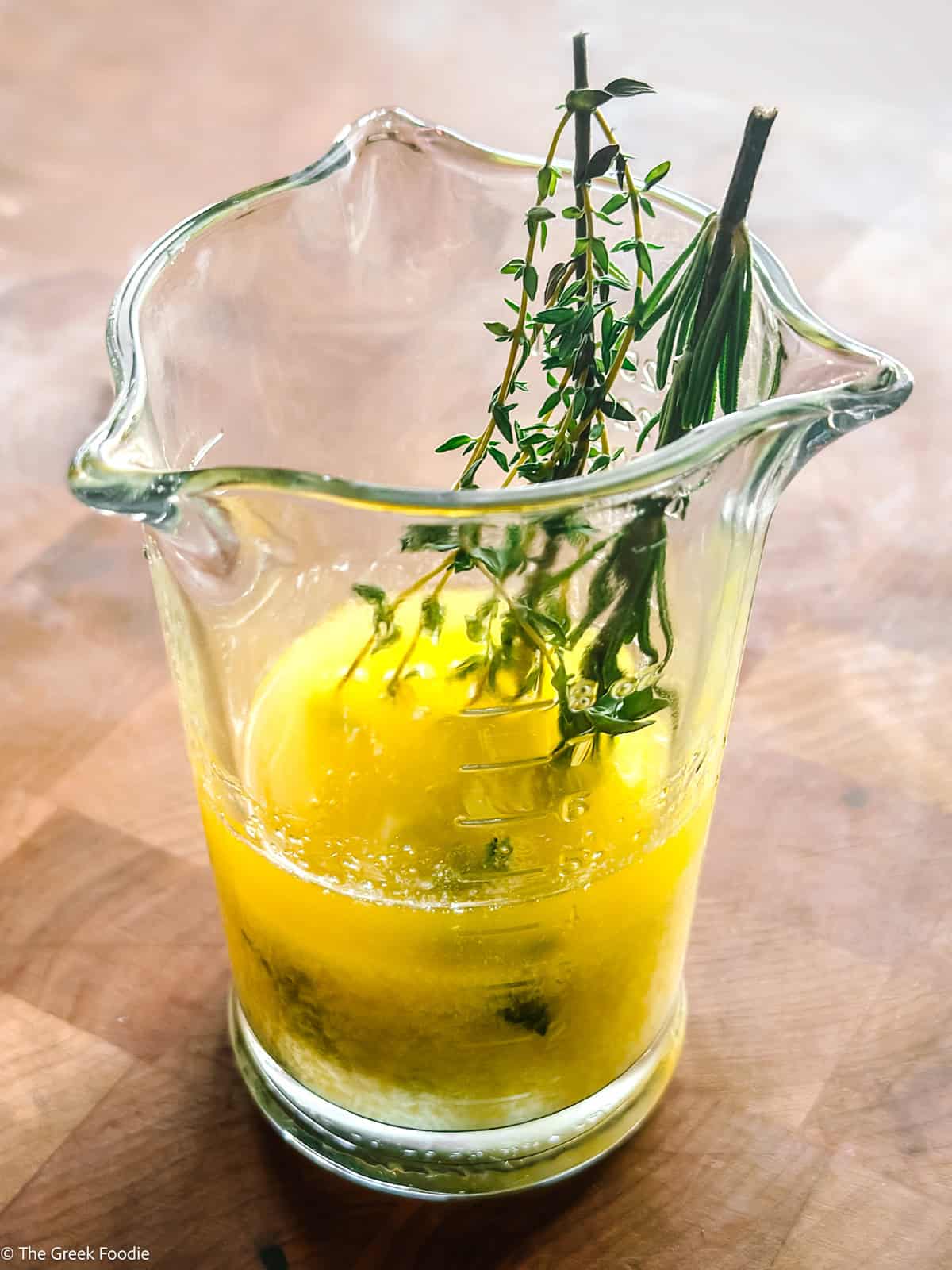
- In a cup, melt the rest of the butter and add some herbs to infuse it.
- Inject butter inside the thickest part of the thighs and breasts every half an hour of roasting.
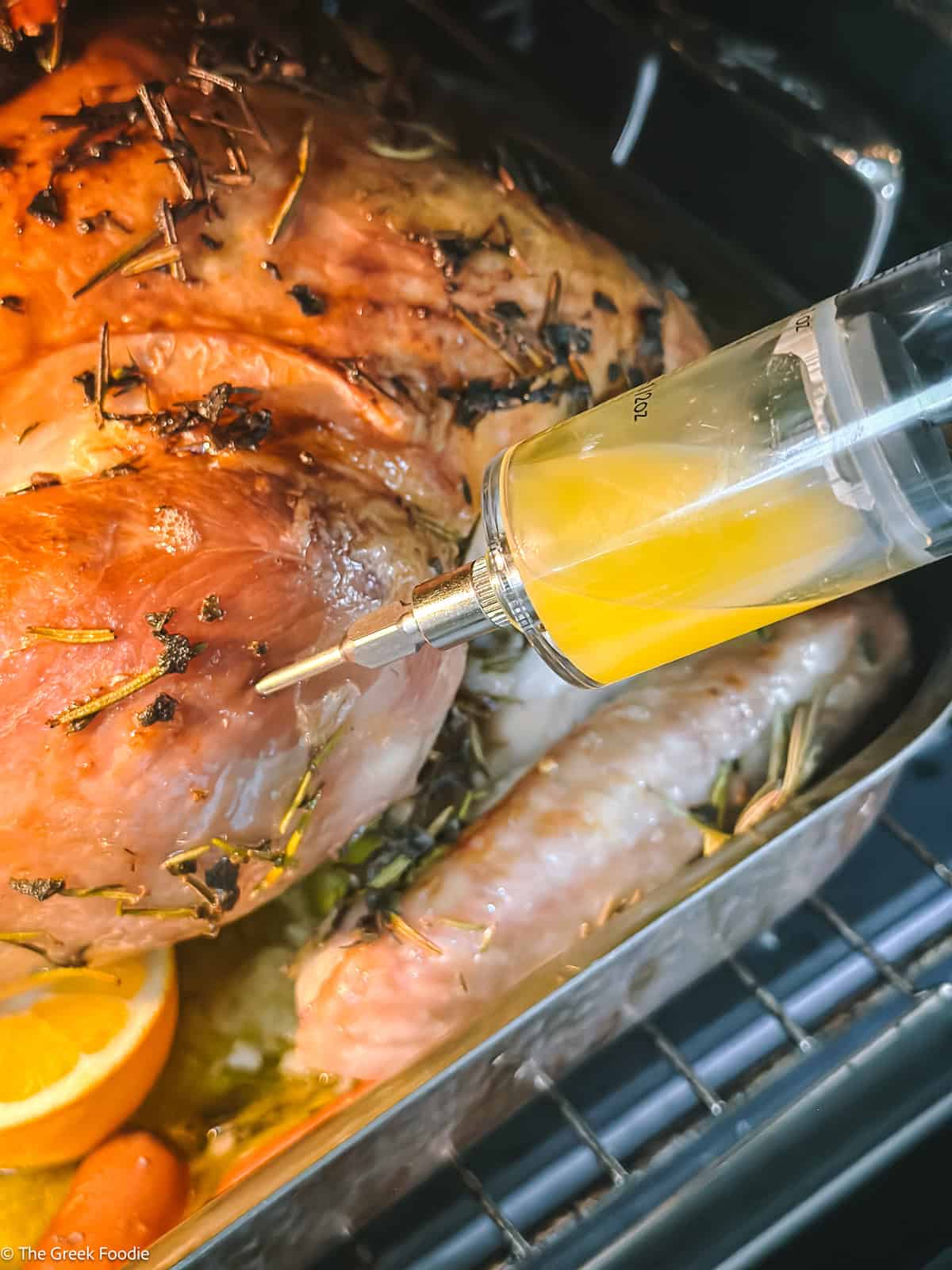
- When the melted butter in the cup is used, draw the buttery dripping from the bottom of the pan and inject it into the turkey. These drippings have major flavor from the citrus fruit, herbs, garlic, and herb butter melting from the turkey.
- A stuffed turkey should roast for 15 minutes per pound at 180°C / 355°F. Use a meat thermometer to ensure the turkey is at 74°C / 165°F.
- Let the roasted turkey rest for 30 minutes before carving.
- Pass the turkey drippings through a sieve and use it to make the gravy.
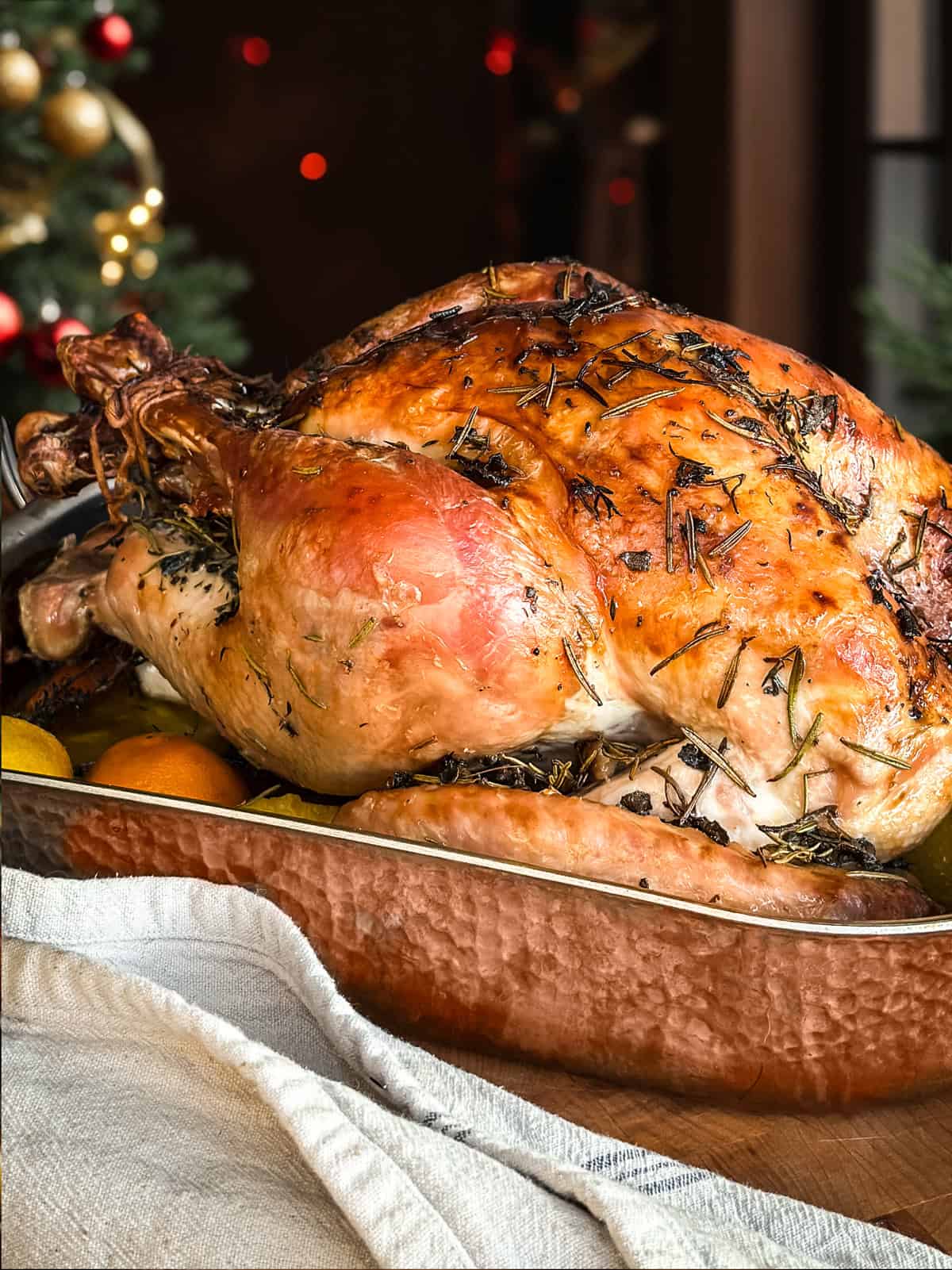
Make the gravy
You will need:
- 1½ cup of the turkey drippings
- ½ cup all-purpose flour
- 2 cups turkey stock
- freshly ground black pepper
- Heat ½ cup of the turkey drippings in a saucepan over medium-low heat for three minutes. Whisk the flour into the drippings until golden, about 5 minutes. Add the rest of the drippings and keep whisking.
- Whisk the turkey stock into the flour mixture. Increase the heat to medium and cook, whisking continuously, until the gravy is smooth and creamy, 5 to 10 minutes, depending on your preference in consistency. Season with freshly ground pepper to taste and serve immediately.
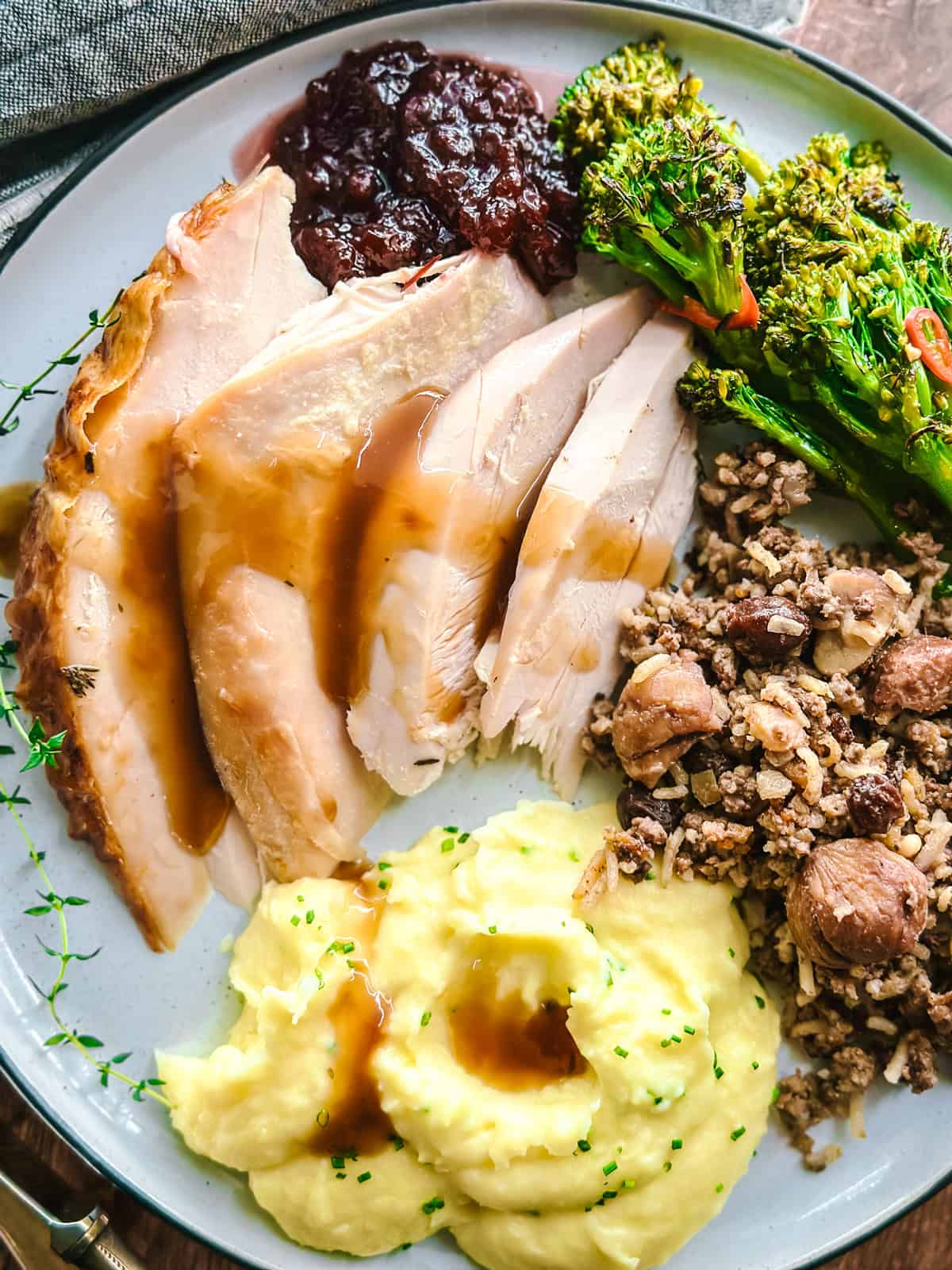
Helpful tips
- One way to check if the turkey is done is to insert a thin skewer into the leg. If the liquid that comes out is pale pink, it needs more cooking. If it comes out clear, the turkey is done.
- Or, use a meat thermometer to insert it into the leg (away from the bone, as it develops a higher temperature than the meat). If it shows 74°C / 165°F, then the bird is ready.
- If the turkey is not yet ready but gets too much color on top, cover it again with aluminum foil.
- Use any root vegetables for the pan: carrots, turnips, celery roots, onions, and garlic.
- Remove the turkey from the oven and cover it with aluminum foil for 30 minutes to recover its juices.
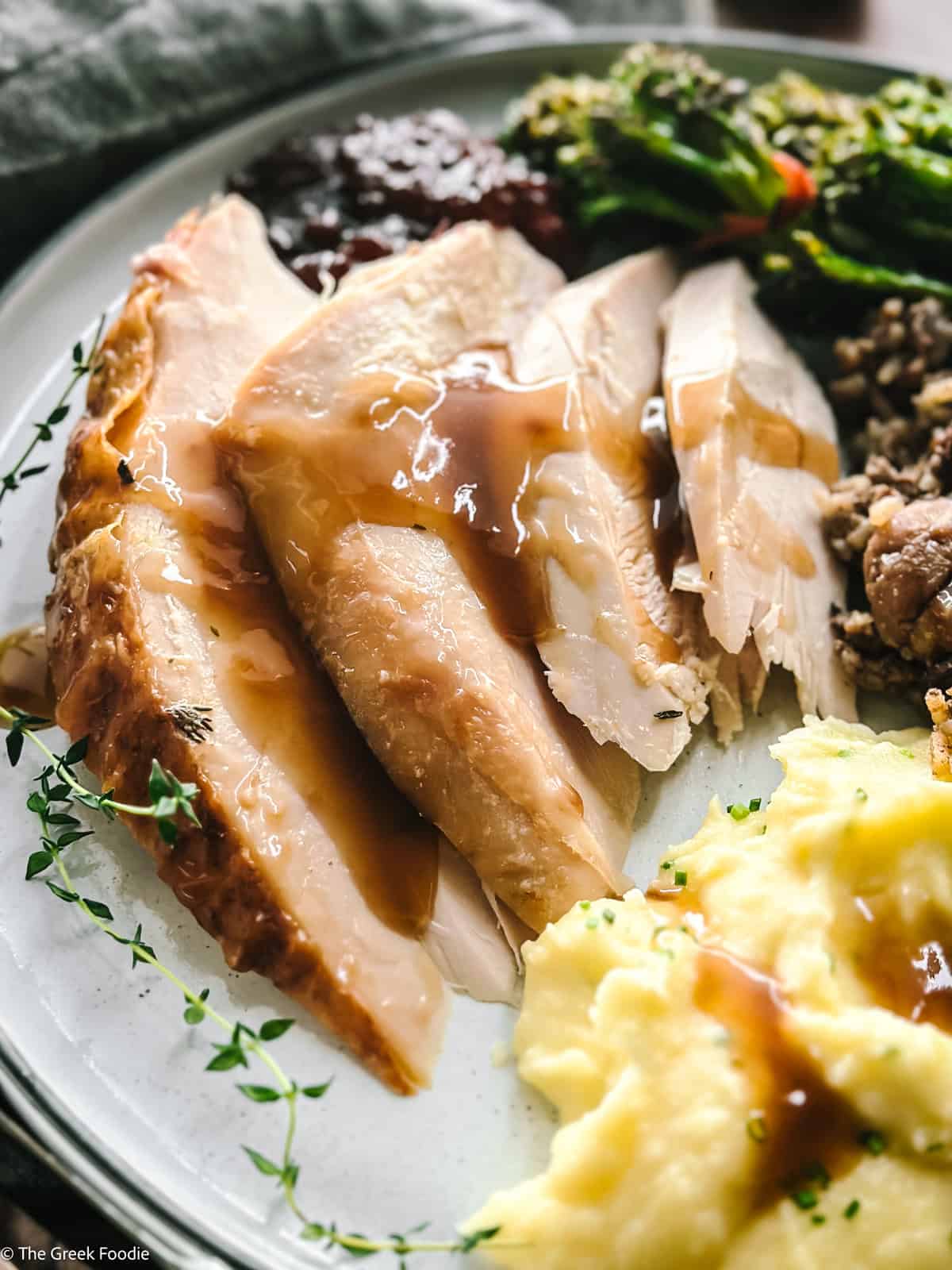
Side dishes for our Herb butter Christmas turkey
- Potatoes. We make two kinds of potatoes, mashed and lemon potatoes, to please everyone in the family.
- Salad. Roasted broccoli and cauliflower is a colorful, yummy salad that adds a healthy option to your festive menu. A traditional Greek lettuce salad is also a great option.
- Veggies. Our roasted cabbage is a terrific, tasty side dish perfect for Christmas.
- Rice. Not everyone likes potatoes. This festive pilafi with toasted pine nuts, chestnuts, and cranberries is a great alternative.
You may also like
Cooked this? Rate this recipe! You can also leave a comment below. I love hearing from you!
WANT TO EAT LIKE A GREEK? Subscribe to my newsletter and follow me on Facebook, Pinterest, and Instagram for the latest updates.

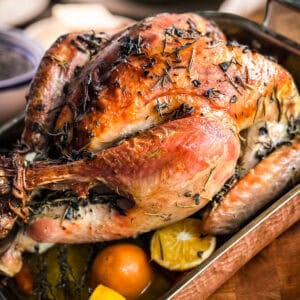
Herb Butter Christmas Turkey
Equipment
- kitchen twine
- meat trussing needle or metal skewer
Ingredients
- 1 whole turkey about 10-12 lbs
- sea salt
- 1 cup butter softened
- fresh thyme
- fresh rosemary
- 2-3 oranges
- 2-3 lemons
- 2-3 carrots
- 2 garlic heads
- Greek stuffing
For the gravy
- 1½ cup turkey drippings
- ½ all-purpose flour
- 2 cups turkey stock
- freshly ground pepper
Instructions
Brine
- Start at least one day (and up to three days) before you intend to roast your turkey. Remove the giblets from the cavity, then pat dry well all over with paper towels both inside and outside
- Cover the turkey with coarse sea salt.Place the salted turkey on a rack inside a rimmed baking sheet to catch drippings or in your cooking pan. Refrigerate it uncovered for at least 1 hour per pound (14 hours for a 14-pound turkey). With dry brining, you can go up to three days of resting. If having a raw, uncovered turkey in your fridge feels uncomfortable, loosely cover it with plastic wrap or a brining bag. For the crispiest skin, uncover the turkey for at least the last six hours before cooking.There’s no need to rinse the turkey before roasting; there shouldn’t be any salt residue left.
- Make the Greek stuffing.
Make the herb butter
- Roughly chop the herbs with a sharp knife or in a food processor. Mix the chopped herbs ¾ of the softened butter.
Stuff and truss the turkey
- Turn the turkey upside down and gently fill the neck cavity with stuffing. Once filled, carefully tuck the neck skin over the filling and secure it neatly against the underside of the turkey. You can sew it closed or use a long toothpick or skewer.Close the cavity. You can use a thread and a long thick needle or a long skewer with plenty of kitchen twine tied tightly on one end. Pierce the skin on the right side of this flap with the sharp point of the needle. Slide the needle and thread the loose skin from one side of the cavity to the other as tight as possible. Pass the needle through a couple of times if needed. Use the extra twine to tie the legs crossed tight over the cavity.Fold the wings under the turkey or cut them with poultry scissors. If you leave the wings as they are, wrap them with aluminum foil to avoid burning.
Roast
- Gently lift the breast skin from the flesh as much as possible without tearing it. Insert some butter under the skin wherever you can. It's okay if you don't go too far in.Rub all the herb butter all over the turkey.
- Arrange orange and lemon halves, herb sprigs, carrots and a couple of heads of garlic(cut the top off).
- Lay the buttered turkey on top of the fruits, veggies and herbs. Cover with aluminum foil. Roast turkey at 200°C / 400°F for an hour.
- Lower the oven temperature to 180°C / 355°F. Uncover and continue roasting.
- In a cup, melt the rest of the butter and add some herbs to infuse it. Inject butter inside the thickest part of the thighs and breasts every half an hour of roasting.
- When the melted butter in the cup is used, draw the buttery dripping from the bottom of the pan and inject it into the turkey.
- A stuffed turkey should roast for 15 minutes per pound at 180°C / 355°F. Use a meat thermometer to ensure the turkey is at 74°C / 165°F. Cover with foil and allow the roasted turkey to rest for 30 minutes before carving.
Make the gravy
- Pass the turkey drippings through a sieve and use it to make the gravy.
- Heat ½ cup of the turkey drippings in a saucepan over medium-low heat for three minutes. Whisk the flour into the drippings until golden, about 5 minutes. Add the rest of the drippings and keep whisking.
- Whisk the turkey stock into the flour mixture. Increase the heat to medium and cook, whisking continuously, until the gravy is smooth and creamy, 5 to 10 minutes, depending on your preference in consistency. Season with freshly ground pepper to taste and serve immediately.
Notes
- To check if the turkey is done, insert a thin skewer into the leg. If the liquid that comes out is pale pink, it needs more cooking. If it comes out clear, the turkey is done.
- If you have a meat thermometer, insert it into the leg (away from the bone, as the bone develops a higher temperature than the meat). If it shows 74°C / 165°F, then it is ready.
- Remove the turkey from the oven and cover it with aluminum foil for 30 minutes to recover its juices.
- Use any kind of root vegetables for the pan: carrots, turnips, celery roots, onions, and garlic.
Nutrition
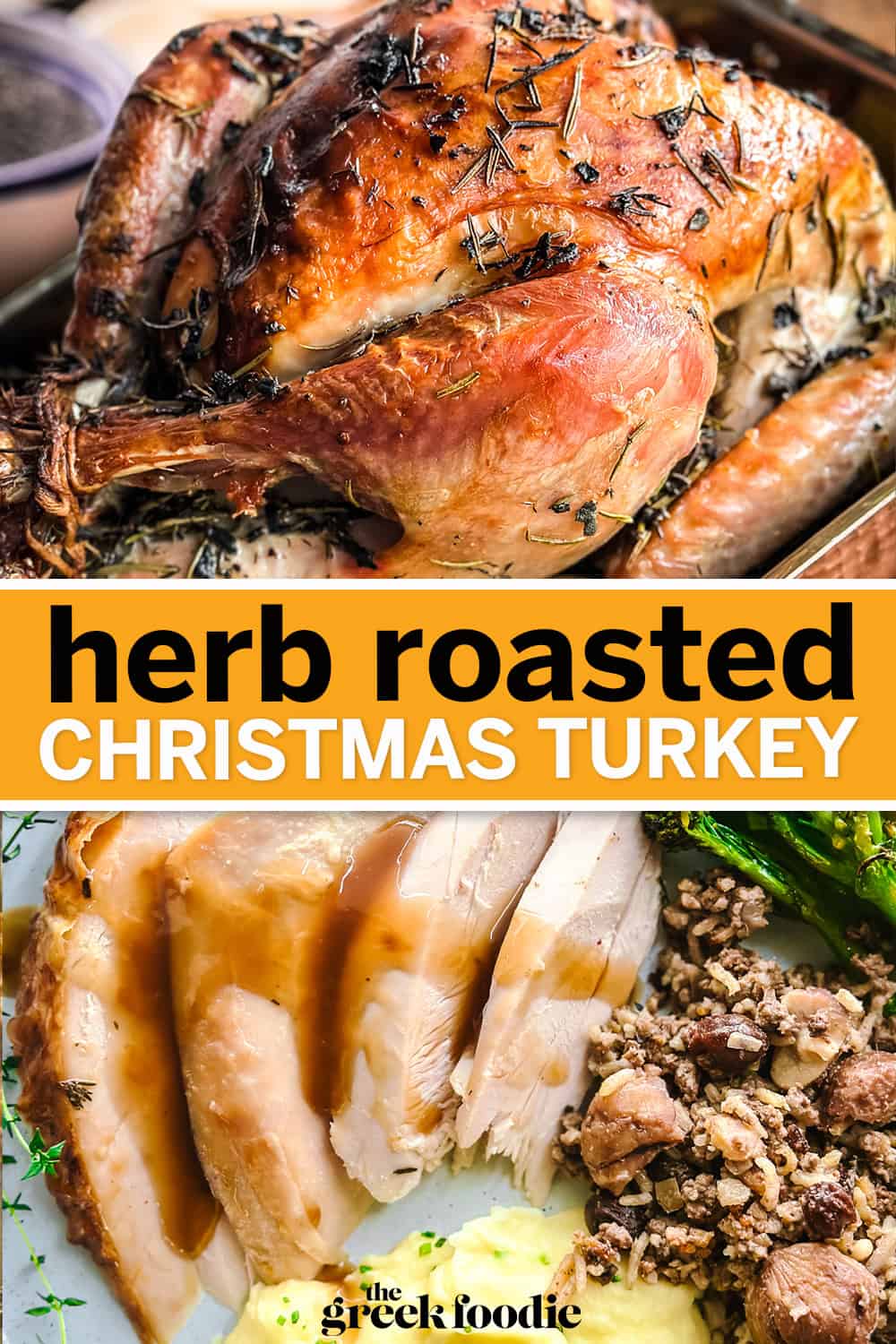


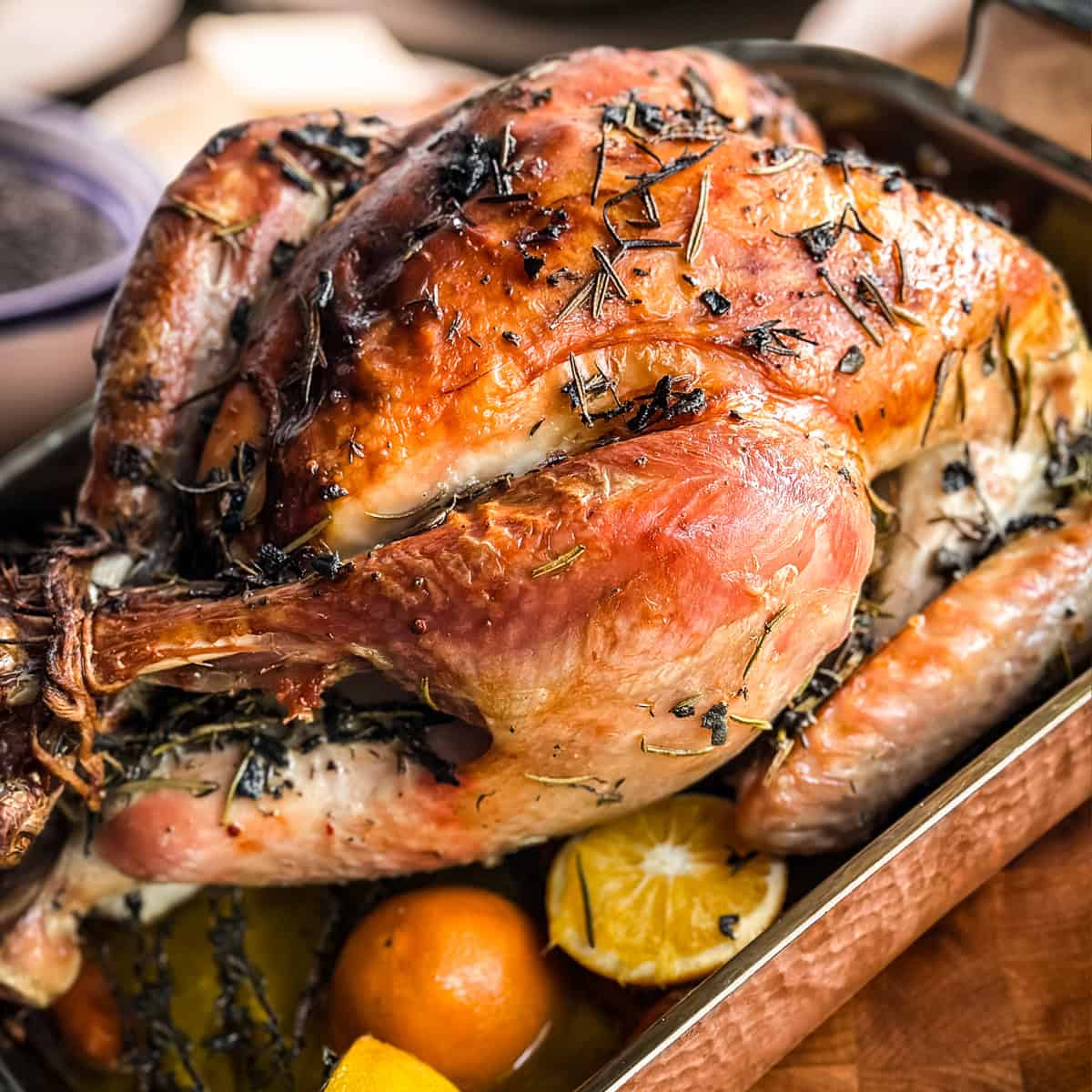

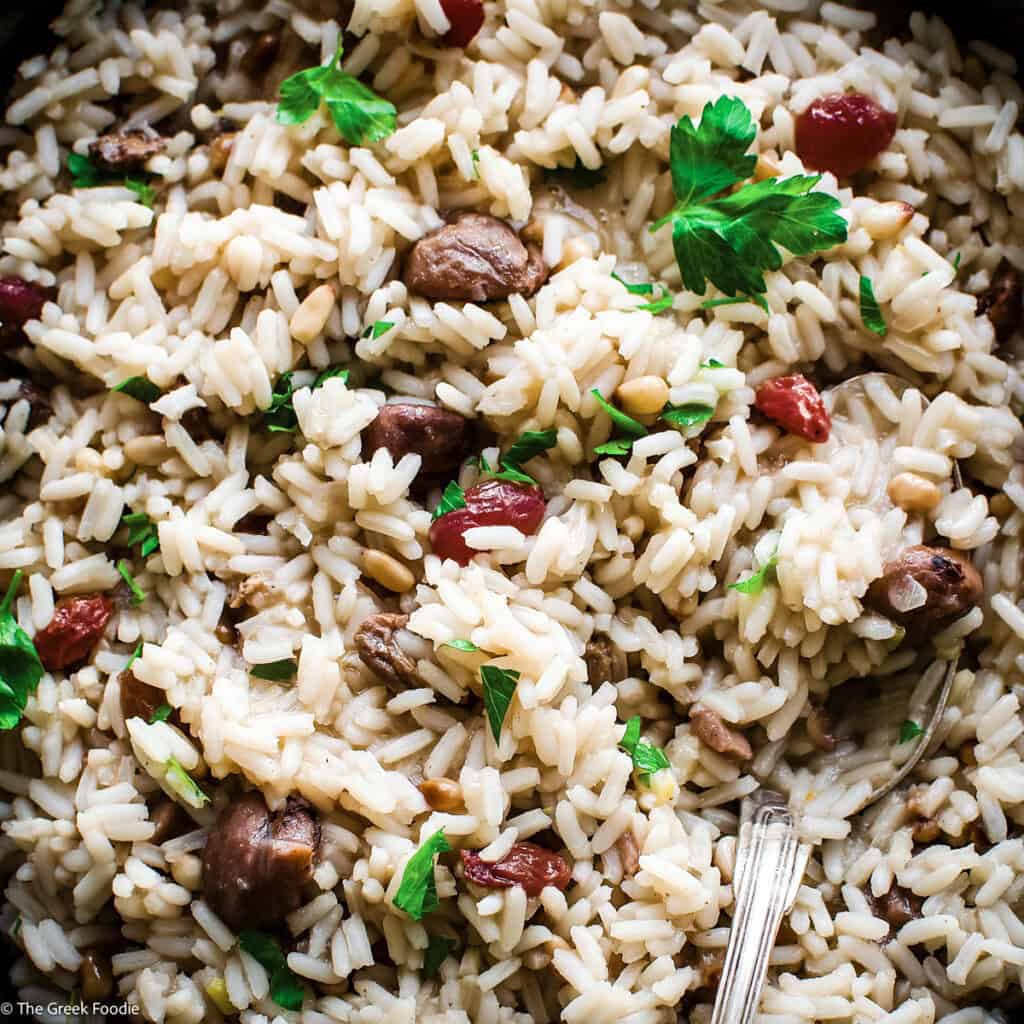
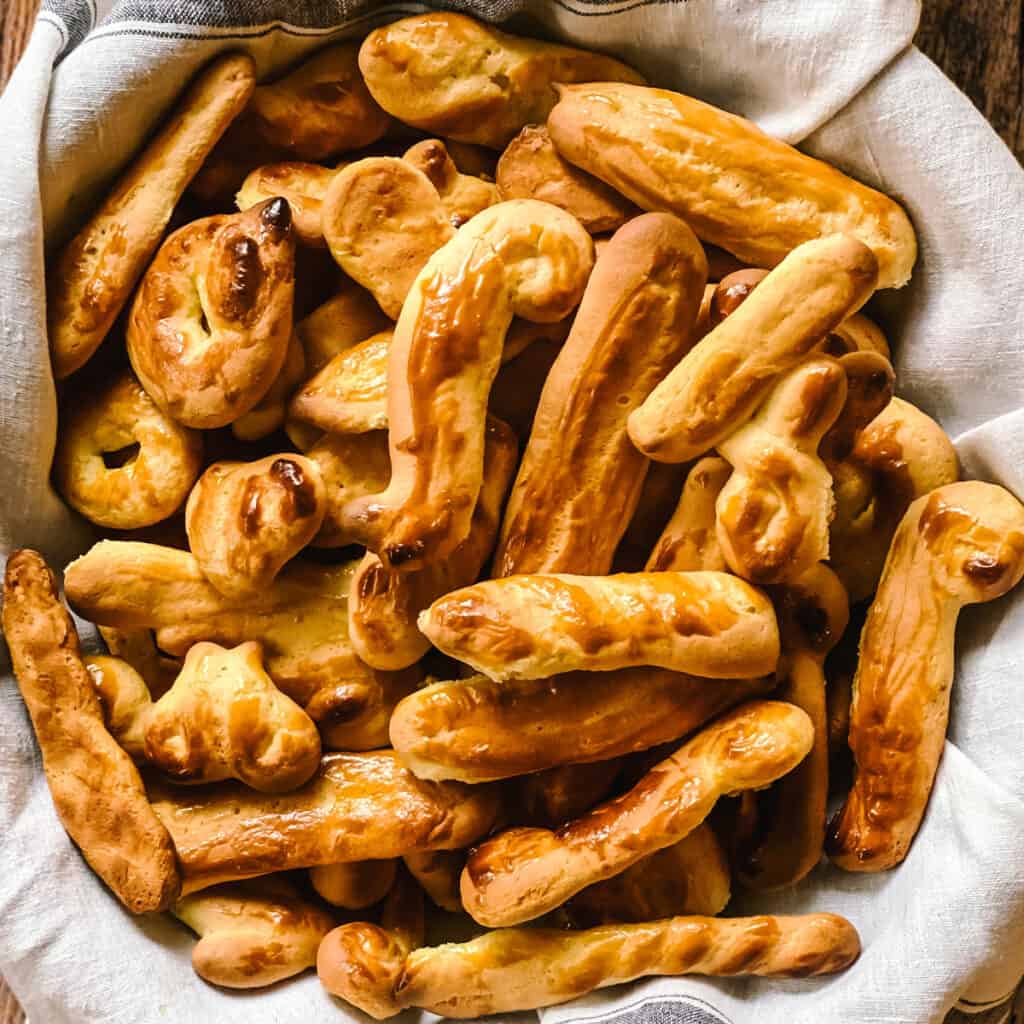


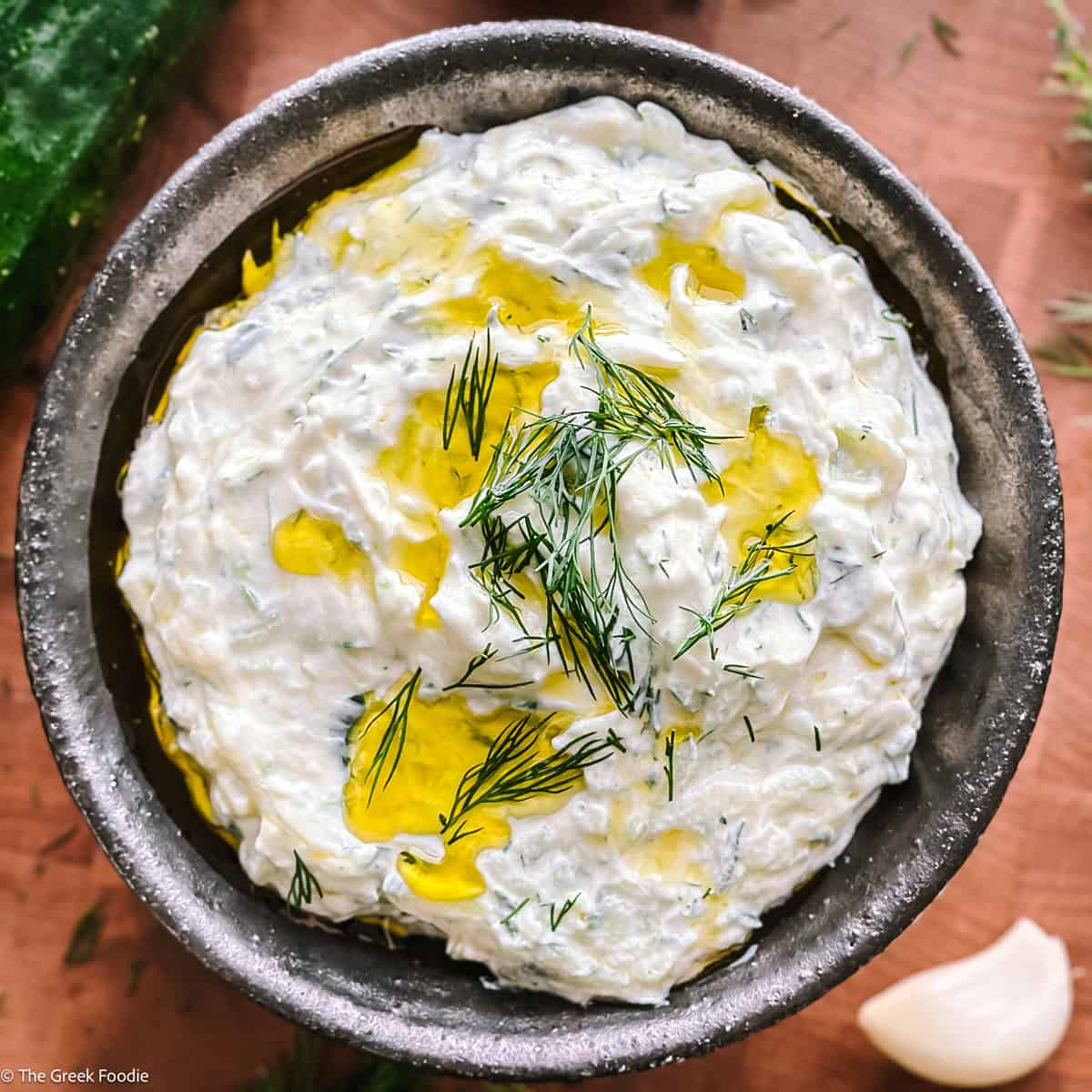
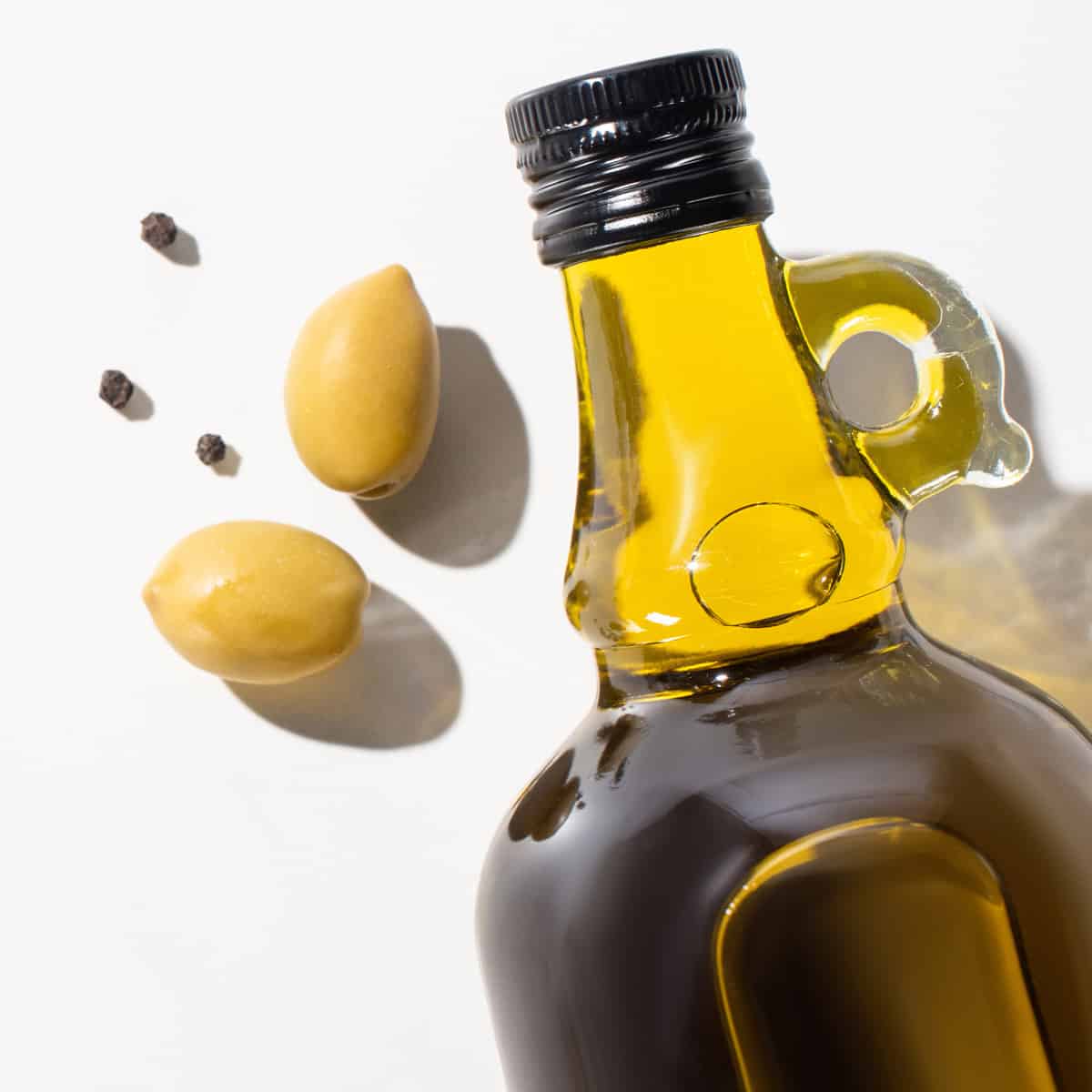
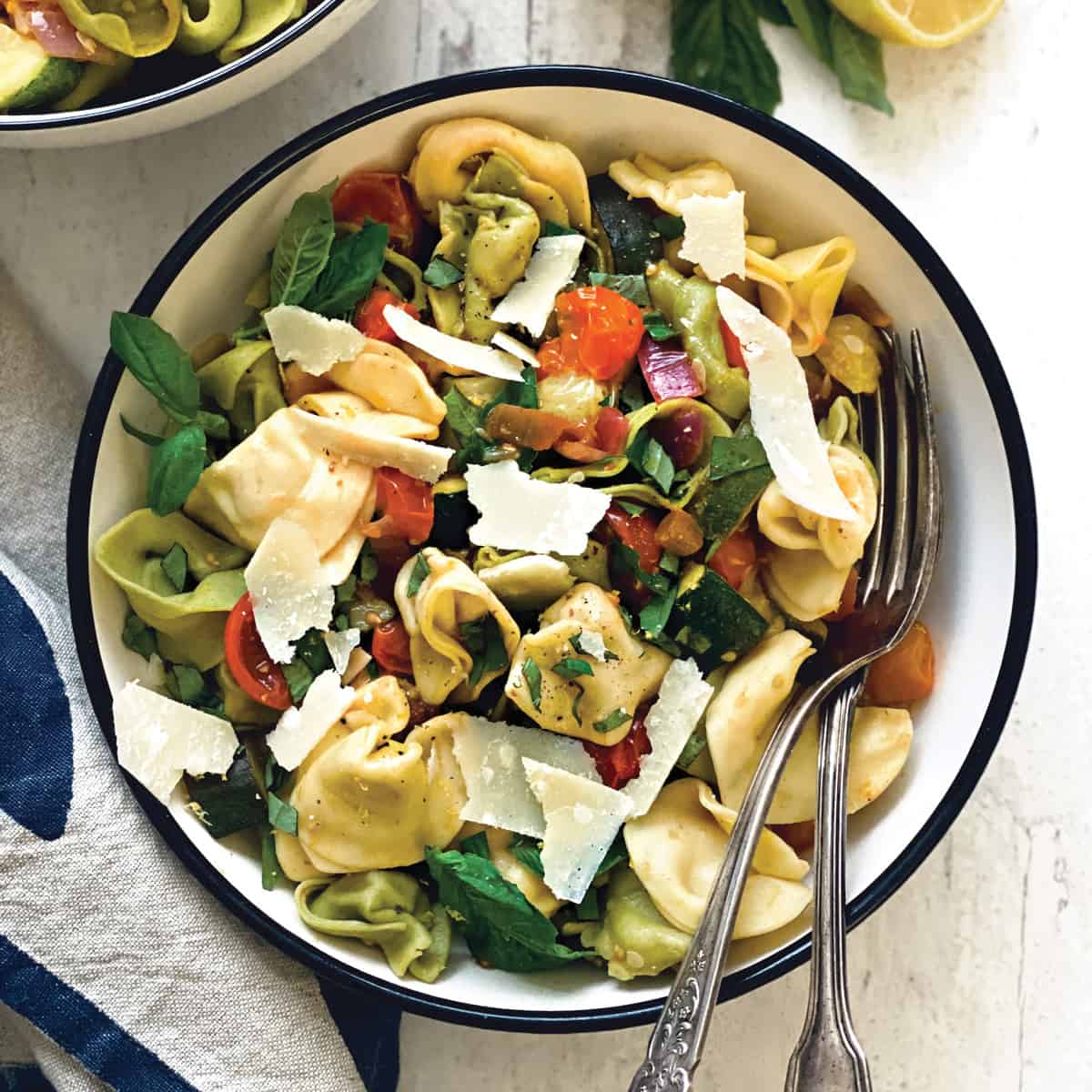

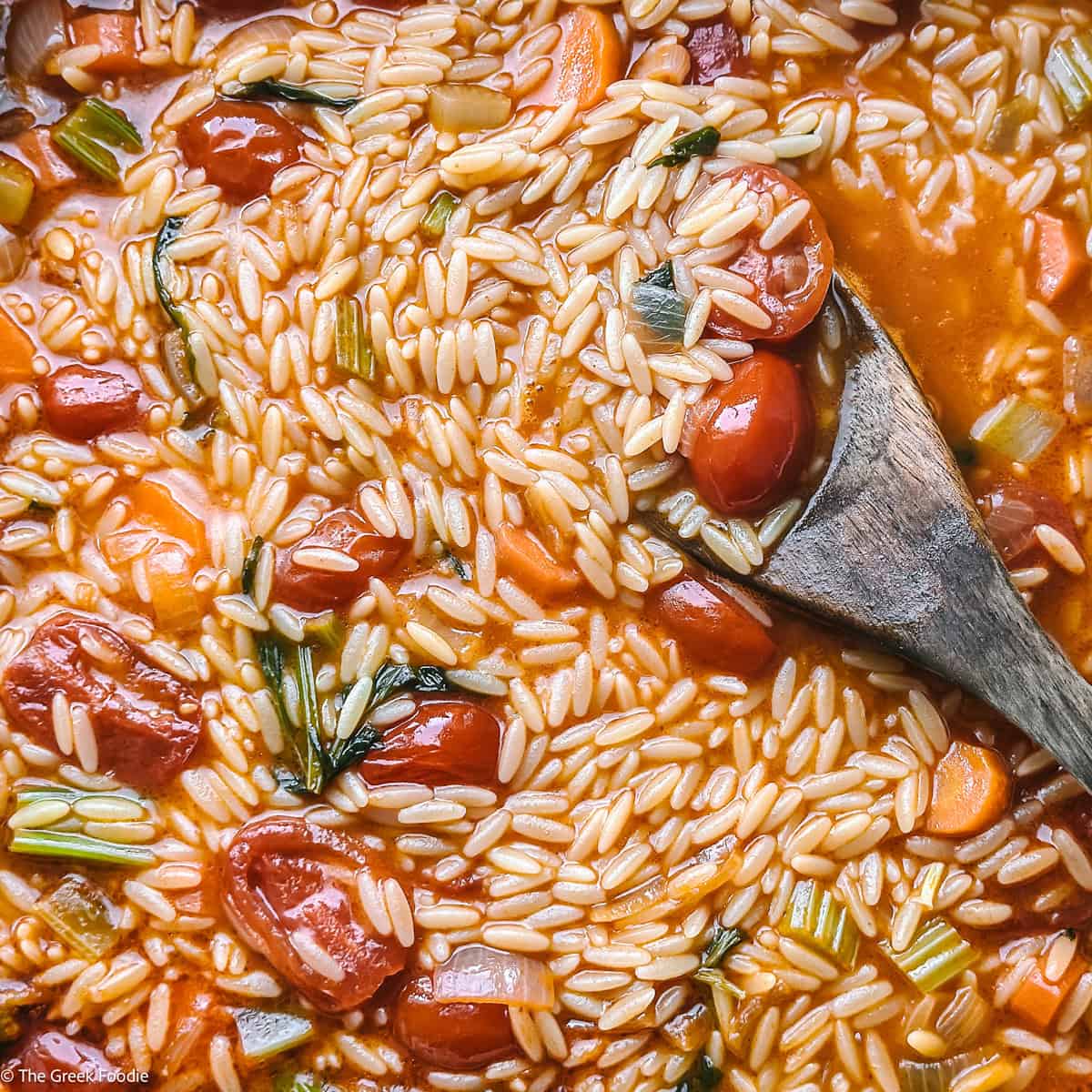
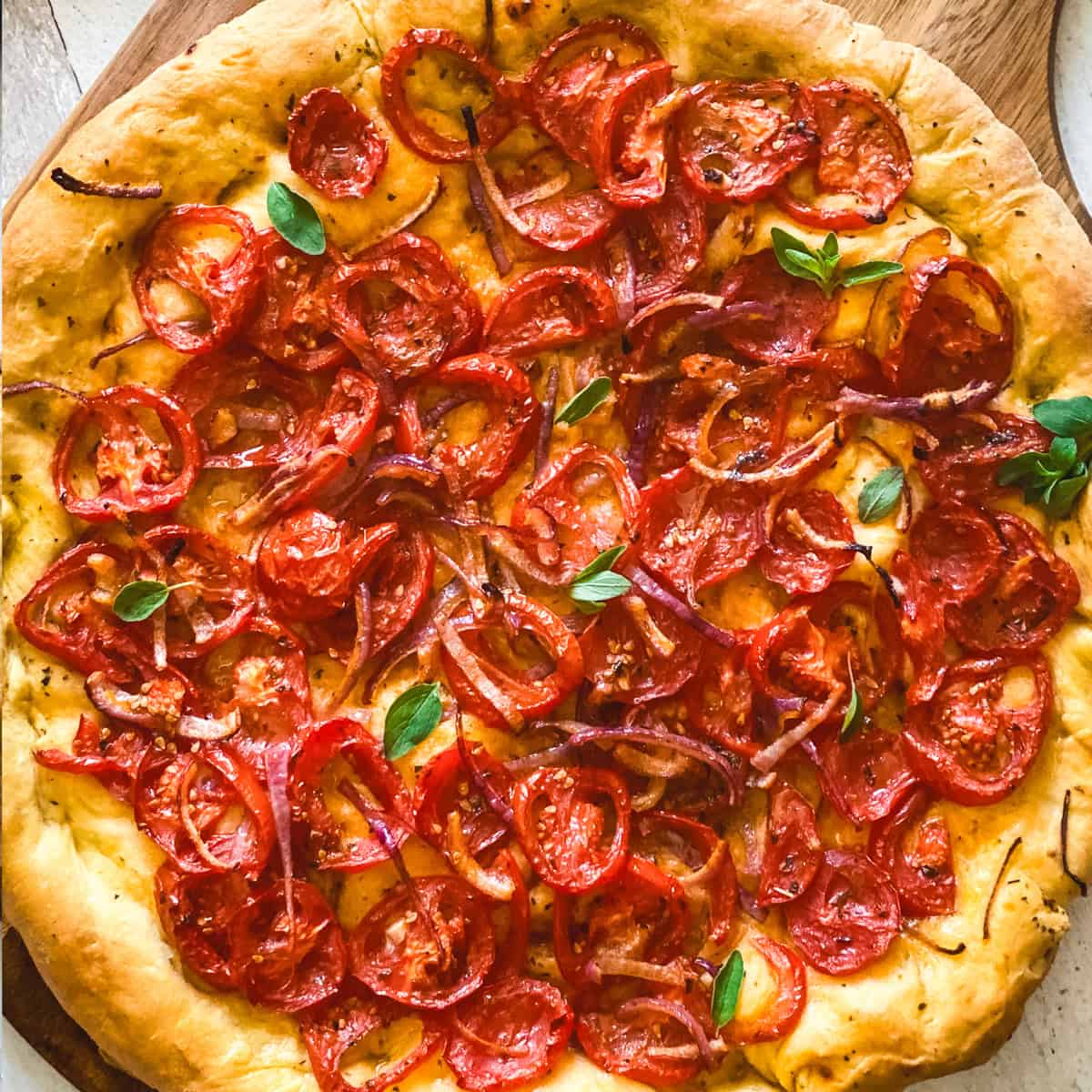
Something about injecting the bird with liquid butter made it flavorful and juicy. Best turkey I’ve had in a long time!
Thank you so much Mr Graves!